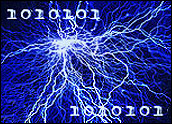
Green tech company A123 on Monday launched a spinoff, 24M, which will commercialize next-generation energy storage systems based on its technology.
24M has received funding from the Department of Energy and the Department of Defense, as well as venture capitalists.
The company will work with MIT and Rutgers University to commercialize A123’s technology.
Chipping Away at 24M’s Mystery
Both 24M and A123 revealed little information about the “breakthrough technology” that would be commercialized, apart from saying that it combines attributes of rechargeable batteries, fuel cells, and flow batteries to enable scalable, cost-effective, high-energy storage systems for emerging markets, including transportation and the electric grid.
“24M is not going to say anything about the technology beyond what is in the release,” Meg O’Leary, who works at the company’s public relations firm, InkHouse, told TechNewsWorld.
“The technology will be available within five years,” O’Leary added. They are not discussing target markets at this point, she added.
“The company’s pretty non-specific in its release, so it’s hard to know whether or not its claims are overstated,” Carl Howe, director, anywhere consumer research at the Yankee Group, told TechNewsWorld.
However, it’s possible to make an educated guess about 24M’s technology. The company’s initiative seems to be related to some work done at MIT using flow batteries, Howe pointed out.
Flow batteries pump liquid electrolyte, which is often stored in external tanks, through an electrochemical cell to produce electricity, Howe said. The liquid electrolyte can be stored externally, so the power capacity of the battery isn’t restricted to its physical size but instead to how much electrolyte can be stored close by, he explained.
“The liquid electrolyte provides opportunities for energy storage, making it useful for technologies like wind and solar power, where power sources may not be available at all times,” Howe said. “So think more about power plants and less about electric cars for the initial applications of this technology, although you could clearly put small versions in a car.”
24M has said that its work builds on earlier development done at MIT.
About A123’s Technology
A123 develops and manufactures advanced “nanophosphate” lithium ion batteries and systems based on nanoscale materials initially developed at the Massachusetts Institute of Technology.
These offer low cost-per-watt and have higher voltages than other long-life battery systems, A123 says.
In 2007, A123 signed an agreement with General Motors to codevelop batteries for the automaker’s E-Flex electric drive system.
“A123 is fairly well-known in the Boston area as one of our up-and-coming green companies,” the Yankee Group’s Howe said. “They hold the patents on that nanophosphate technology, and they primary develop lithium-ion batteries for transportation.”
Money Talks
Perhaps the strongest indication that 24M’s technology is likely to be viable is who’s backing it.
The company scored US$10 million in Series A financing from venture capitalists Charles River Ventures and North Bridge Venture Partners.
North Bridge has previously backed Yet-Ming Chiang, the lead inventor of the technology, stated Jeffrey McCarthy, general partner at the VC. Chiang is also a cofounder of A123.
24M has also received funds from the Department of Energy under the ARPA-E program to develop its technology. Its partners on the project, MIT and Rutgers, had received funding from the Defense Advanced Research Projects Agency (DARPA)
ARPA-E, the Advanced Research Projects Agency — Energy, was set up within the Department of Energy in 2007 to spur innovation in energy research. It received $400 million in funding in April 2009 through the American Recovery and Reinvestment Act. ARPA-E is modeled after DARPA, which developed the Internet and other innovations such as stealth technology for U.S. fighter planes.
“The DARPA funding alone suggests the technology will work,” Rob Enderle, principal analyst at the Enderle Group, told TechNewsWorld. “This is still very early in the development cycle, but the technology has pulled impressive levels of funding from organizations that are competent, capable and have a history of doing deep analysis before funding.”
Winning’s the Only Thing
The technology appears complex, and that will dramatically slow its time to market, Enderle pointed out.
However, 24M can’t afford to take a leisurely approach, Enderle warned.
“Whether the technology will be timely in coming to market and be competitive when it arrives is a critical issue,” Enderle remarked. “For example, laser technology was well-funded and thought to offer huge opportunities a few years ago, but never reached its anticipated potential.”





















































